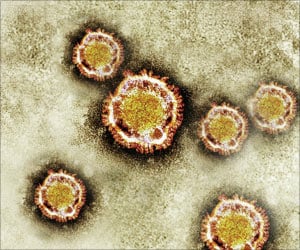Brain injuries associated with football appear to be rising, reveals report.

Until recently, the number of football-related brain injuries with permanent disability in high school had remained in the single digits since 1984. However, the tally rose to 10 injuries in 2008 and 2009, and there were 13 in 2011, according to the latest catastrophic football injury research annual report from the UNC-based National Center for Catastrophic Sports Injury Research.
"These 2011 numbers are the highest since we began collecting catastrophic brain injury data," said Fred Mueller, Ph.D., the report's lead author, director of the center and professor emeritus of exercise and sports science in the College of Arts and Sciences. "This is a major problem."
About 4.2 million football players compete nationwide, including 1.1 million high schoolers.
The center has collected data and published annual reports on catastrophic football injuries, including fatalities, disabilities and serious injuries, for 48 years. The National Collegiate Athletic Association, National Federation of State High School Associations and the American Football Coaches Association fund the research.
The center's work is believed to be directly responsible for nearly eliminating football fatalities, as well as drastically reducing the number of cervical cord injuries to single digits, between the late 1960s and the early 1990s.
Advertisement
Some players recover fully after surgery and rehabilitation following injuries. However, many only recover partially, living with paralysis or mental deficiency, relying on intensive lifetime medical care. Since 1984, there have been 488 cervical cord and cerebral injuries with incomplete recovery, including 164 brain injuries, of which 148 were among high schoolers. Additionally, the years between 2001 to 2010 saw a 25 percent jump in football-related disability brain injuries over the previous decade, increasing to 66 from 52 incidents among all types of players.
Mueller said reversing the trend required several changes, which some in the football community are already implementing. Coaches must be well versed in the signs and symptoms of concussions, such as headaches, dizziness, nausea and light sensitivity, and pull players from games if they exhibit those indicators. Players should not return to play until cleared by a physician. Teams also should hold pre-season meetings to discuss concussions, conduct medical evaluations of all players and emphasize that the head should not be used in tackling or blocking.
The report's recommendations also note that schools should hire coaches who teach proper fundamental skills, and retain athletic trainers certified by the National Athletic Trainers' Association. Referees must be vigilant about throwing flags when they see illegal tackles and parents also must be involved in meetings and discussions about concussions.
"All of these measures are important if we want to continue to make a positive impact on the game," he said. "We have to continue research in this area. Accurate data not only indicate problem spots, but they also help us offer appropriate precautions and reveal the adequacy of our preventive measures."
Source-Eurekalert













